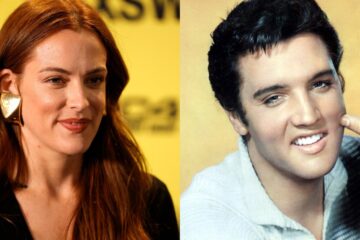The Beatles released their debut album, Please Please Me, in 1963. Yet, by the following year, Beatlemania was sweeping the nation. John Lennon, Paul McCartney, George Harrison and Ringo Starr became the United Kingdom’s heartthrobs, known for songs such as ‘She Loves You’, which became the first single to sell one million copies.
When The Beatles set out on tour, you’d be lucky to hear the Liverpool foursome over the high-pitched impassioned screams of the audience, with many people comparing the band’s obsessive teenage following as akin to religious devotion. In Bob Stanley’s book Yeah! Yeah! Yeah!:
The Story of Pop Music from Bill Haley to Beyoncé, he argues that The Beatles signalled a “final liberation” for Britain’s teenagers, and by coinciding with the end of the National Front, they “effectively signalled the end of World War II in Britain”.
To capitalise on this success, A Hard Day’s Night was released in 1964. Directed by Richard Lester, the filmmaker behind Superman II and III, the movie saw The Beatles play fictionalised versions of themselves. Initially planned to be titled Beatlemania due to its portrayal of the band’s struggle with fame, rather ironically, real-life Beatlemania made production rather tricky, and many critics believed the film actually sanitised its depiction of the band’s devoted fanbase.
A Hard Day’s Night chronicles 36 hours in the lives of the band as they prepare for a television performance. In the process, an abundance of disasters and comedic events occur, such as Ringo being arrested and the band losing track of Paul’s grandfather, all whilst avoiding maniacal hoards of fans following their every move.
The screenplay was written by Alun Owen, who was chosen due to his capability to write Liverpudlian dialogue, as demonstrated in his film, No Trams to Lime Street. According to McCartney, “Alun hung around with us and was careful to try and put words in our mouths that he might’ve heard us speak, so I thought he did a very good script”. With that, much of the dialogue was lifted from real-life Beatles moments, such as Starr calling himself a “mocker” instead of a mod or rocker, a joke he had previously told on Ready Steady Go.
Discussing the film, Lester explained: “The general aim of the film was to present what was apparently becoming a social phenomenon in this country. Anarchy is too strong a word, but the quality of confidence that the boys exuded! Confidence that they could dress as they liked, speak as they liked, talk to the Queen as they liked, talk to the people on the train who ‘fought the war for them’ as they liked. [Everything was] still based on privilege—privilege by schooling, privilege by birth, privilege by accent, privilege by speech. The Beatles were the first people to attack this… they said if you want something, do it. You can do it. Forget all this talk about talent or ability or money or speech. Just do it.”
Shot in black-and-white cinéma vérité style, the film blends fact and fiction, employing plenty of comedic gags at every turn. Even the silliest joke seems to land because each band member possesses an indefatigable charm, even when authority figures try to test them. It goes without saying, the film encapsulates such an iconic time in history, not just for music but for London, youth culture, changing gender roles, and fashion.
Following its release, A Hard Day’s Night gave way to a legion of British spy thrillers and comedies inspired by the film – even the Monkees’ television show was directly influenced by it. The film even led to the popularisation of the music video, and in 1984, Lester was awarded the title of ‘The Father of the Music Video’ by MTV. Not only do the band play their songs in the film, but they also appear over montages, giving songs their own visual narratives, something never seen before.
Lester gave his camera operators the freedom to use their equipment innovatively during the band’s performances, such as zooming in and out on random body parts and cutting away at the audience. In doing so, A Hard Day’s Night helped to revolutionise the potential of on-screen musical performances, giving them a distinctively cinematic edge. And, of course, these musical performances contained some of the band’s greatest early tracks, including ‘Can’t Buy Me Love’, ‘And I Love Her’, and I’m Happy Just to Dance With You’, which we see the band play with enthusiasm.
A Hard Day’s Night has endured for decades due to its mass appeal to all ages, revelling in self-aware foolishness and enjoyable performances from everyone involved. The impact Lester’s film has had is monumental, and it’s hard to imagine the landscape of musical cinema without it.




